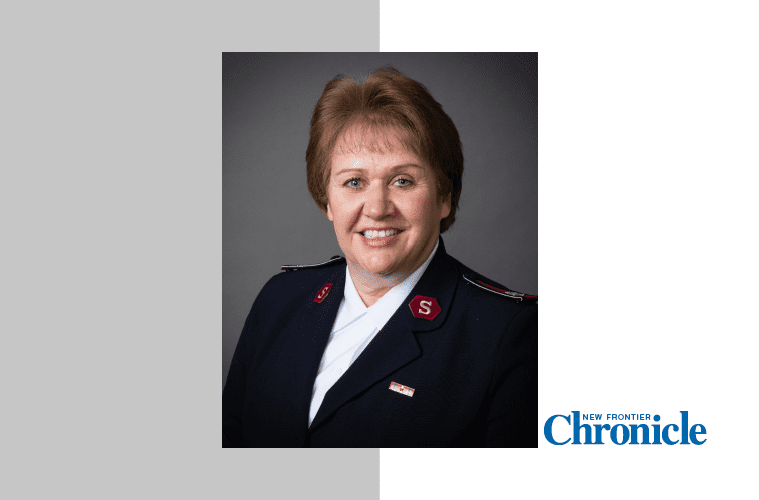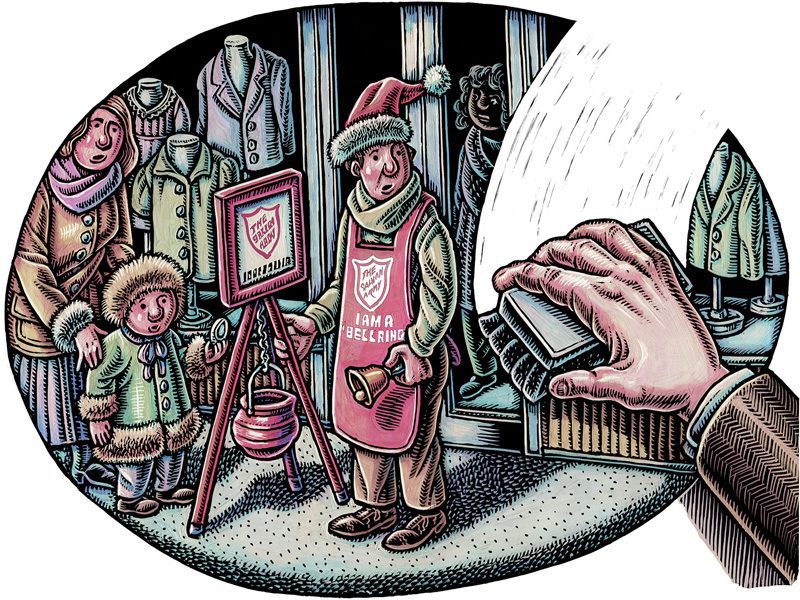Like ARC, West’s social services aim to integrate beneficiaries with corps community.
By Susan Barton –
In a spring meeting of the West’s social service caucus, an element of the territory’s Harvest Initiative effort to connect people in relationship, Territorial Commander Commissioner James Knaggs brought a singular focus to the two-day gathering.
“Social Services is the main public arena for The Salvation Army—the expression the world knows and cares about,” he said. “We are The Salvation Army. If we’re not saving people, we should change our name.”
Representatives from around the Western Territory, including Alaska, Hawaii, Colorado, Oregon and throughout California, shared examples of best practices currently happening in their local context. Territorial Social Service Secretary Major Lawrence Shiroma presented on the history of social services in the West.
“We’re not like other churches. We have a specific calling: to preach the good news to the poor, the marginalized, the oppressed,” said delegate Lt. Jennifer Swain, corps officer in Monterey, Calif.
In order to explore global social service innovation in The Salvation Army, the group heard from Major Brendon Nottle of the Australia Southern Territory who shared via Skype his unique approach to integrating social services and corps ministry. Instead of offering traditional weekly corps programs, the Melbourne 614 corps provides youth clubs and drop-in centers, street teams to engage with homeless and intoxicated youth, and a café, which offers regular meal provision. They have become integral support to local government and police agencies in assisting with tangible city social needs.
“God wants to see transformation in the lives of our local people,” Nottle said. “We are called to show up in the hard places and reach them through relationship and prayer.”
Members of the caucus focused on five areas to address in the coming months: Social holiness and mission advocacy; Pragmatic approach to integration from a social service center perspective; Corps readiness to engage in social service integration; Training, accountability, certification processes; and Innovation: social service models for the future.
A sub-group of delegates strategized each of these areas and reported initial ideas to Knaggs at the conclusion of the caucus. The suggestions—from social service training programs, to sermon series, Bible studies, divisional and territorial advocates, and education and assessment tools—will be vetted in the coming months with implementation planned for the next 18-24 months.
The Harvest Initiative, which is already seeing successful outcomes with the ARC program, seeks to integrate those who are already positively impacted by Salvation Army programs and help them find caring community within local corps. Addressing the population reached through social service programs is a natural next step in this initiative.
“We served 4.6 million people [unduplicated] through social services last year,” Knaggs said. “How many of them are we bringing to Christ? How many are becoming Salvationists? If just 1 percent of this group joined our movement, every corps in the territory would gain 150 people.”
Like ARC, West’s social services aim to integrate beneficiaries with corps community.
By Susan Barton –
In a spring meeting of the West’s social service caucus, an element of the territory’s Harvest Initiative effort to connect people in relationship, Territorial Commander Commissioner James Knaggs brought a singular focus to the two-day gathering.
“Social Services is the main public arena for The Salvation Army—the expression the world knows and cares about,” he said. “We are The Salvation Army. If we’re not saving people, we should change our name.”
Representatives from around the Western Territory, including Alaska, Hawaii, Colorado, Oregon and throughout California, shared examples of best practices currently happening in their local context. Territorial Social Service Secretary Major Lawrence Shiroma presented on the history of social services in the West.
“We’re not like other churches. We have a specific calling: to preach the good news to the poor, the marginalized, the oppressed,” said delegate Lt. Jennifer Swain, corps officer in Monterey, Calif.
In order to explore global social service innovation in The Salvation Army, the group heard from Major Brendon Nottle of the Australia Southern Territory who shared via Skype his unique approach to integrating social services and corps ministry. Instead of offering traditional weekly corps programs, the Melbourne 614 corps provides youth clubs and drop-in centers, street teams to engage with homeless and intoxicated youth, and a café, which offers regular meal provision. They have become integral support to local government and police agencies in assisting with tangible city social needs.
“God wants to see transformation in the lives of our local people,” Nottle said. “We are called to show up in the hard places and reach them through relationship and prayer.”
Members of the caucus focused on five areas to address in the coming months: Social holiness and mission advocacy; Pragmatic approach to integration from a social service center perspective; Corps readiness to engage in social service integration; Training, accountability, certification processes; and Innovation: social service models for the future.
A sub-group of delegates strategized each of these areas and reported initial ideas to Knaggs at the conclusion of the caucus. The suggestions—from social service training programs, to sermon series, Bible studies, divisional and territorial advocates, and education and assessment tools—will be vetted in the coming months with implementation planned for the next 18-24 months.
The Harvest Initiative, which is already seeing successful outcomes with the ARC program, seeks to integrate those who are already positively impacted by Salvation Army programs and help them find caring community within local corps. Addressing the population reached through social service programs is a natural next step in this initiative.
“We served 4.6 million people [unduplicated] through social services last year,” Knaggs said. “How many of them are we bringing to Christ? How many are becoming Salvationists? If just 1 percent of this group joined our movement, every corps in the territory would gain 150 people.”












